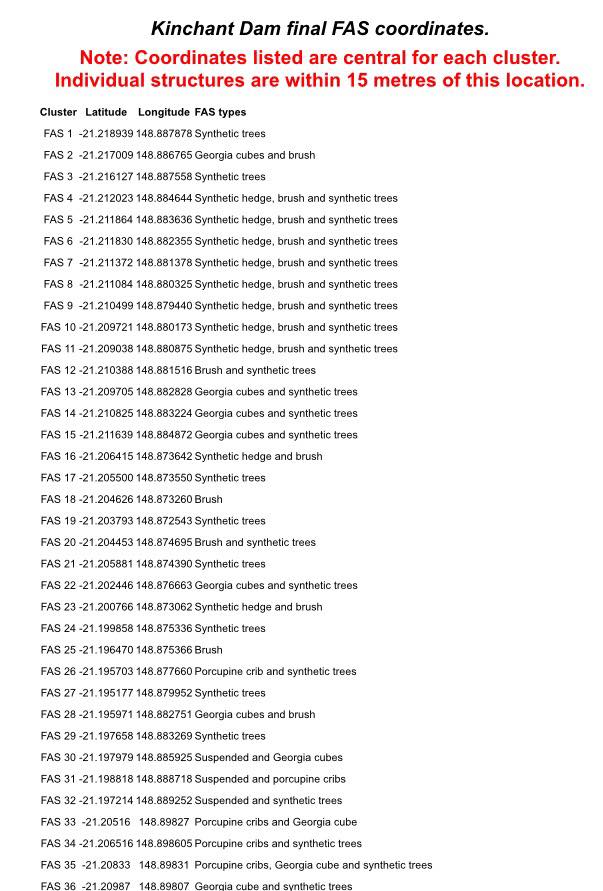The Top End’s Arnhem Highway is Australia’s barramundi highway, leading to some of the nation’s best barramundi hotspots.
Shady Camp heads the list.
Shady Camp is a camping area with boat ramps next to a barrage that separates fresh and tidal water in Sampan Creek, which is part of the lower Mary River.
While Shady Camp itself is a good fishing spot, it is more of an access point for nearby areas.
The great fishing is associated with the Mary River wetlands, which extend west to the Adelaide River and east through to Kakadu National Park.
Famous freshwater fishing spots Corroboree Billabong and Hardies Lagoon are located upstream of Shady Camp. Boats can not reach these places from Shady Camp however, only road access is possible from side roads off the Arnhem Highway.
There are boat ramps immediately above and below Shady Camp barrage.
The saltwater ramp is tide-affected, drying at low tide, with a short window of launching unless wet season floodwater is present.
Landbased fishing is popular at the barrage despite the ever-present big crocodiles, and it is something of a miracle that fishermen are not taken.
The wet season and shortly after is the best time to fish Shady Camp.
Spots accessed by boat from Shady Camp include Sampan Creek, Tommycut Creek, Marsh Creek, Love Creek, Carmor Creek, Thrings Creek, Point Stuart, Wildman River and Shady Jew Reef.
All the creeks are fished for barramundi during the wet season when the flow is running from feeder creeks into the bigger creeks, or directly into the sea from coastal creeks.
There is some scope to chase Build-up barramundi in warm, calm weather during neap tides, when the water clears enough for lure fishing.
This area falls under the Mary River Management Zone and special fishing rules apply.
Every year, tagged barramundi worth $10k are released in this region for the Million Dollar Fish annual promotion. Some of these fish are eligible to collect the $1m prize.
Detailed fishing maps and marks for this area, including fishable rockbars and exclusive charts of the coastal reefs, are in the North Australian FISH FINDER book.
How to fish Shady Camp
The barrage itself fishes best at the top of big tides, and 120cm fish are a chance.
Night fishing works well but crocodile attack is a real possibility, as big crocodiles are always in the vicinity.
During the dry season there is good fishing in the freshwater section for barramundi and saratoga, with at least two trollable rockbars.
Large tides breech the barrage and can produce bursts of good fishing at this time.
Wet season floodwater turns the area into an inland sea when barramundi spread out far and wide.
The fishing improves as the river falls after flooding.
Barramundi congregate at floodplain creeks along the river channel, and at coastal floodplain creek mouths.
Colour changes between turbid tidal water and clear run-off are always worth a cast but the real secret is to find where bait is located.
During flooding it is best to fish far downstream where Sampan and Tommycut Creeks drop below the banks, or at creeks along along the coast.
Once floods subside there is a period of greenwater flow which provides good fishing, and tides will then usually decide when the fish come on.
The small coastal creeks tend to fish best from the top of the tide down, on the biggest tides, and when floodwater is still present. Fish over 1m are regularly caught.
The small coastal creek mouths dry as the tide falls, so be sure to leave in time, but Tommycut and Sampan channels usually remain navigable.
Small earth barrages on the various wetland creeks can fish when they breech from ongoing monsoonal rain.
Trolling works at the Sampan and Tommycut Creek mouths, with casting the usual method at small creek mouths.
Use at least 15kg braided line and well-made Australian lures such as Reidys and Classics. Soft plastics and vibes such as Vibelicious work well.
Some imported lures are not strong enough for barramundi.
Leaders of around 40kg are needed.
Thanks to netting closures big threadfin salmon are super-abundant along this coastline and become almost a nuisance when targeting trophy barramundi.
The coastal waterways here are mostly free of rockbars. At sea, there is a substantial area of rocks extending seaward from around Point Stuart, and there are drying rock patches in front of Carmor Creek.
Shady Camp is busy at the best fishing times, with week days are a quieter time to fish.
Because this area has many saltwater crocodiles and bull sharks, take particular care when landing or releasing fish.
A productive jewfish and snapper reef lies just offshore, which is mapped out in the North Australian FISH FINDER book, which also contains maps of the two trollable rockbars in the Shady Camp freshwater section.
You can also search for Shady Camp topics on the https://www.fishingterritory.com forums by going here.
Accommodation central to these great fishing locations is at Corroboree Park Tavern. Book early if visiting in the popular dry season.
Darwin has a range of charter and accommodation options, book early to avoid disappointment.
Chambers Bay (below Shady Camp) tides
Recent NT rainfall – important for run-off fishing
NT tidal variations
NT fishing regulations
Latest Kakadu access report
Kakadu fishing rules
NT Million Dollar Fish promotion
North Australian FISH FINDER fishing map book
Email corrections, additions, pictures or video here.

